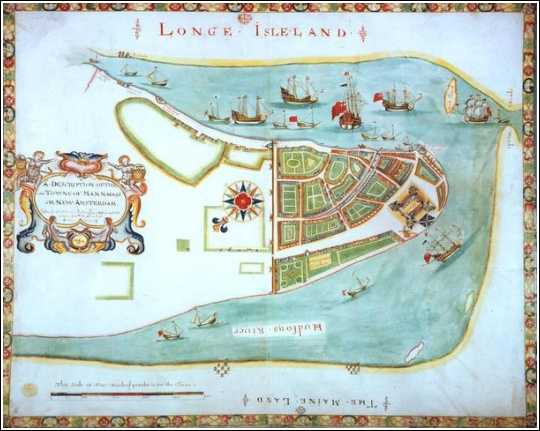The First Signs of Decline
In the sumer of 1632, many people were reported to leave Manhattan. note According to one report, at the time of the arrival of the new director-general, Willem Kieft, in March 1638, not only were five farms vacant but there was not a living animal to be found on those farms.note An inventory taken in March 1639 shows the tragic state of affairs on the six farms. Probably at least twenty-seven cows (including yearlings and heifers) and thirteen horses had been sold to Van Rensselaer between 1632 and 1638.note These numbers exclude the animals that were acquired before 1632. In a letter to Kieft of May 1639, Van Rensselaer somewhat halfheartedly states, "I judge, however, that the land at the Manhatans must be bad, as the people with their cattle are going to other places where they expect to find better land."noteThe total stock on the West India Company farms on Manhattan in March 1639 consisted of four mares, one stallion, one gelding, ten cows, two heifers, eleven oxen and one bull on the Directors farm (farm no.1), and three milch cows and three bull calves on farm no. 3.note In all thirty head of cattle and six horses, compared to sixty cows and forty-seven horses in 1630.

An idea of the causes of this situation as seen through the eyes of the Company officials may be found by looking at a special provision included in the lease contracts for the Manhattan farms in 1639. In these contracts the lessee had to promise that "he shall cultivate it or have it cultivated, diligently and industriously, without attending exclusively to the increase of the cattle, in order that the Company may annually receive a good quantity of grain."note In another contract this provision is stated even clearer: "not to attend exclusively to the increase of the cattle, but diligently to till the soil, which is the Company's principal object herein."note In the lease contracts made up before May 1639, there is not any allusion to tenants attending too much to cattle raising. The scarcity of grain, however, seems to have been a continuing problem for the Company in these years. In a contract of March 1639, in which farm no. 6 was leased to Jan van Vorst, it was stated that Van Vorst was "bound to sow every year as much grain as he and his man will be able to conveniently manage."note In various contracts of 1638-1639 it was stipulated that the Company should pay fifty guilders annually for the payment of farmhands. Apparently, the tillage of the soil was hindered by the lack of diligent farm servants. We know, however, that the Company also made use of its slaves in harvesting its grain in the years before 1638.note For rent, the lessors of three company farms in the spring of 1639 had to pay half of their crops, thirty pounds of butter per cow and half of the increase of the cattle. Each of these farms was provided with three horses and five or six cows.note
The years 1638 and 1639 can be marked as the last effort of the Company to exploit its Manhattan farms on a profitable basis. Within two weeks after his arrival in March 1638, new director-general Kieft adressed the problem of the sad state of affairs on the farms. He immediately ran into trouble with his predecessor, Wouter van Twiller, who claimed certain rights on the cattle of farm no. 1, the best farm, that was traditionally rented by the highest Company official in New Netherland, the director-general. On April 8, 1638, Kieft and his council decided that the cattle on no. 1 should remain for the behoof of Van Twiller, on condition that the cattle not be removed from Manhattan. It was further decided that Kieft should take an inventory of the cattle and that the matter at issue was to be referred to the directors in Amsterdam.note
